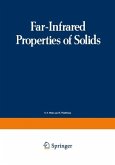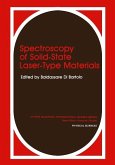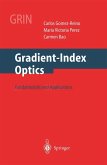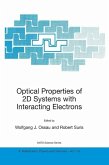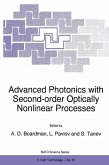Near-field Nano/Atom Optics and Technology (eBook, PDF)
Redaktion: Ohtsu, Motoichi
72,95 €
72,95 €
inkl. MwSt.
Sofort per Download lieferbar

36 °P sammeln
72,95 €
Als Download kaufen

72,95 €
inkl. MwSt.
Sofort per Download lieferbar

36 °P sammeln
Jetzt verschenken
Alle Infos zum eBook verschenken
72,95 €
inkl. MwSt.
Sofort per Download lieferbar
Alle Infos zum eBook verschenken

36 °P sammeln
Near-field Nano/Atom Optics and Technology (eBook, PDF)
Redaktion: Ohtsu, Motoichi
- Format: PDF
- Merkliste
- Auf die Merkliste
- Bewerten Bewerten
- Teilen
- Produkt teilen
- Produkterinnerung
- Produkterinnerung

Bitte loggen Sie sich zunächst in Ihr Kundenkonto ein oder registrieren Sie sich bei
bücher.de, um das eBook-Abo tolino select nutzen zu können.
Hier können Sie sich einloggen
Hier können Sie sich einloggen
Sie sind bereits eingeloggt. Klicken Sie auf 2. tolino select Abo, um fortzufahren.

Bitte loggen Sie sich zunächst in Ihr Kundenkonto ein oder registrieren Sie sich bei bücher.de, um das eBook-Abo tolino select nutzen zu können.
This volume provides the most advanced and instructive information of near-field nano/atom optics and technology to graduate students. On the other hand, as it presents very new ideas and approaches, it will be useful for researchers interested in applying new technology to their research as well as those students.
- Geräte: PC
- ohne Kopierschutz
- eBook Hilfe
- Größe: 27.87MB
Andere Kunden interessierten sich auch für
![Picosecond Phenomena II (eBook, PDF) Picosecond Phenomena II (eBook, PDF)]() Picosecond Phenomena II (eBook, PDF)72,95 €
Picosecond Phenomena II (eBook, PDF)72,95 €![Far-Infrared Properties of Solids (eBook, PDF) Far-Infrared Properties of Solids (eBook, PDF)]() Far-Infrared Properties of Solids (eBook, PDF)72,95 €
Far-Infrared Properties of Solids (eBook, PDF)72,95 €![Physics and Applications of Non-Crystalline Semiconductors in Optoelectronics (eBook, PDF) Physics and Applications of Non-Crystalline Semiconductors in Optoelectronics (eBook, PDF)]() Physics and Applications of Non-Crystalline Semiconductors in Optoelectronics (eBook, PDF)160,95 €
Physics and Applications of Non-Crystalline Semiconductors in Optoelectronics (eBook, PDF)160,95 €![Spectroscopy of Solid-State Laser-Type Materials (eBook, PDF) Spectroscopy of Solid-State Laser-Type Materials (eBook, PDF)]() Baldassare Di BartoloSpectroscopy of Solid-State Laser-Type Materials (eBook, PDF)72,95 €
Baldassare Di BartoloSpectroscopy of Solid-State Laser-Type Materials (eBook, PDF)72,95 €![Gradient-Index Optics (eBook, PDF) Gradient-Index Optics (eBook, PDF)]() C. Gomez-ReinoGradient-Index Optics (eBook, PDF)72,95 €
C. Gomez-ReinoGradient-Index Optics (eBook, PDF)72,95 €![Optical Properties of 2D Systems with Interacting Electrons (eBook, PDF) Optical Properties of 2D Systems with Interacting Electrons (eBook, PDF)]() Optical Properties of 2D Systems with Interacting Electrons (eBook, PDF)112,95 €
Optical Properties of 2D Systems with Interacting Electrons (eBook, PDF)112,95 €![Advanced Photonics with Second-Order Optically Nonlinear Processes (eBook, PDF) Advanced Photonics with Second-Order Optically Nonlinear Processes (eBook, PDF)]() Advanced Photonics with Second-Order Optically Nonlinear Processes (eBook, PDF)40,95 €
Advanced Photonics with Second-Order Optically Nonlinear Processes (eBook, PDF)40,95 €-
-
-
This volume provides the most advanced and instructive information of near-field nano/atom optics and technology to graduate students. On the other hand, as it presents very new ideas and approaches, it will be useful for researchers interested in applying new technology to their research as well as those students.
Dieser Download kann aus rechtlichen Gründen nur mit Rechnungsadresse in A, B, BG, CY, CZ, D, DK, EW, E, FIN, F, GR, HR, H, IRL, I, LT, L, LR, M, NL, PL, P, R, S, SLO, SK ausgeliefert werden.
Produktdetails
- Produktdetails
- Verlag: Springer Japan
- Seitenzahl: 302
- Erscheinungstermin: 6. Dezember 2012
- Englisch
- ISBN-13: 9784431679370
- Artikelnr.: 44054230
- Verlag: Springer Japan
- Seitenzahl: 302
- Erscheinungstermin: 6. Dezember 2012
- Englisch
- ISBN-13: 9784431679370
- Artikelnr.: 44054230
- Herstellerkennzeichnung Die Herstellerinformationen sind derzeit nicht verfügbar.
1. Introduction.- 1.1 Near-Field Optics and Related Technologies.- 1.2 History of Near-Field Optics and Related Technologies.- 1.3 Basic Features of an Optical Near Field.- 1.4 Building Blocks of Near-Field Optical Systems.- 1.5 Comments on the Theory of Near-Field Optics.- 1.6 Composition of This Book.- References.- 2. Principles of the Probe.- 2.1 Basic Probe.- 2.2 Functional Probe: New Contrast Mechanisms.- References.- 3. Probe Fabrication.- 3.1 Introduction.- 3.2 Selective Etching of a Silica Fiber Composed of a Core and Cladding.- 3.3 Selective Etching of a Dispersion Compensating Fiber.- 3.4 Protrusion-Type Probe.- 3.5 Hybrid Selective Etching of a Double-Cladding Fiber.- 3.6 Probe for Ultraviolet NOM Applications.- References.- 4. High-Throughput Probes.- 4.1 Introduction.- 4.2 Excitation of the HE-Plasmon Mode.- 4.3 Multiple-Tapered Probes.- References.- 5. Functional Probes.- 5.1 Introduction.- 5.2 Methods of Fixation.- 5.3 Selecting a Functional Material.- 5.4 Probe Characteristics and Applications.- 5.5 Future Directions.- References.- 6. Instrumentation of Near-Field Optical Microscopy.- 6.1 Operation Modes of NOM.- 6.2 Scanning Control Modes.- References.- 7. Basic Features of Optical Near-Field and Imaging.- 7.1 Resolution Characteristics.- 7.2 Factors Influencing Resolution.- 7.3 Polarization Dependence.- References.- 8. Imaging Biological Specimens.- 8.1 Introduction.- 8.2 Observation of Flagellar Filaments by c-Mode NOM.- 8.3 Observation of Subcellular Structures of Neurons by i-Mode NOM.- 8.4 Imaging of Microtubules by c-Mode NOM.- 8.5 Imaging of Fluorescent-Labeled Biospecimens.- 8.6 Imaging DNA Molecules by Optical Near-Field Intensity Feedback.- References.- 9. Diagnosing Semiconductor Nano-Materials and Devices.- 9.1 Fundamental Aspects of Near-Field Study of Semiconductors.- 9.2.- 9.3 Low-Temperature Single Quantum Dot Spectroscopy.- 9.4 Ultraviolet Spectroscopy of Polysilane Molecules.- 9.5 Raman Spectroscopy of Semiconductors.- 9.6 Diagnostics of Al Stripes in an Integrated Circuit.- References.- 10. Toward Nano-Photonic Devices.- 10.1 Introduction.- 10.2 Use of Surface Plasmons.- 10.3 Application to High-Density Optical Memory.- References.- 11. Near-Field Optical Atom Manipulation: Toward Atom Photonics.- 11.1 Introduction.- 11.2 Cylindrical Optical Near Field for Atomic Quantum Wires.- 11.3 Atomic Quantum Wires.- 11.4 Optically Controlled Atomic Deposition.- 11.5 Near-Field Optical Atomic Funnels.- 11.6 Atomic Quantum Dots.- 11.7 Future Outlook.- References.- 12. Related Theories.- 12.1 Comparison of Theoretical Approaches.- 12.2 Semi-microscopic and Microscopic Approaches.- 12.3 Numerical Examples.- 12.4 Effective Field and Massive Virtual Photon Model.- 12.5 Future Direction.- References.
1. Introduction.- 1.1 Near-Field Optics and Related Technologies.- 1.2 History of Near-Field Optics and Related Technologies.- 1.3 Basic Features of an Optical Near Field.- 1.4 Building Blocks of Near-Field Optical Systems.- 1.5 Comments on the Theory of Near-Field Optics.- 1.6 Composition of This Book.- References.- 2. Principles of the Probe.- 2.1 Basic Probe.- 2.2 Functional Probe: New Contrast Mechanisms.- References.- 3. Probe Fabrication.- 3.1 Introduction.- 3.2 Selective Etching of a Silica Fiber Composed of a Core and Cladding.- 3.3 Selective Etching of a Dispersion Compensating Fiber.- 3.4 Protrusion-Type Probe.- 3.5 Hybrid Selective Etching of a Double-Cladding Fiber.- 3.6 Probe for Ultraviolet NOM Applications.- References.- 4. High-Throughput Probes.- 4.1 Introduction.- 4.2 Excitation of the HE-Plasmon Mode.- 4.3 Multiple-Tapered Probes.- References.- 5. Functional Probes.- 5.1 Introduction.- 5.2 Methods of Fixation.- 5.3 Selecting a Functional Material.- 5.4 Probe Characteristics and Applications.- 5.5 Future Directions.- References.- 6. Instrumentation of Near-Field Optical Microscopy.- 6.1 Operation Modes of NOM.- 6.2 Scanning Control Modes.- References.- 7. Basic Features of Optical Near-Field and Imaging.- 7.1 Resolution Characteristics.- 7.2 Factors Influencing Resolution.- 7.3 Polarization Dependence.- References.- 8. Imaging Biological Specimens.- 8.1 Introduction.- 8.2 Observation of Flagellar Filaments by c-Mode NOM.- 8.3 Observation of Subcellular Structures of Neurons by i-Mode NOM.- 8.4 Imaging of Microtubules by c-Mode NOM.- 8.5 Imaging of Fluorescent-Labeled Biospecimens.- 8.6 Imaging DNA Molecules by Optical Near-Field Intensity Feedback.- References.- 9. Diagnosing Semiconductor Nano-Materials and Devices.- 9.1 Fundamental Aspects of Near-Field Study of Semiconductors.- 9.2.- 9.3 Low-Temperature Single Quantum Dot Spectroscopy.- 9.4 Ultraviolet Spectroscopy of Polysilane Molecules.- 9.5 Raman Spectroscopy of Semiconductors.- 9.6 Diagnostics of Al Stripes in an Integrated Circuit.- References.- 10. Toward Nano-Photonic Devices.- 10.1 Introduction.- 10.2 Use of Surface Plasmons.- 10.3 Application to High-Density Optical Memory.- References.- 11. Near-Field Optical Atom Manipulation: Toward Atom Photonics.- 11.1 Introduction.- 11.2 Cylindrical Optical Near Field for Atomic Quantum Wires.- 11.3 Atomic Quantum Wires.- 11.4 Optically Controlled Atomic Deposition.- 11.5 Near-Field Optical Atomic Funnels.- 11.6 Atomic Quantum Dots.- 11.7 Future Outlook.- References.- 12. Related Theories.- 12.1 Comparison of Theoretical Approaches.- 12.2 Semi-microscopic and Microscopic Approaches.- 12.3 Numerical Examples.- 12.4 Effective Field and Massive Virtual Photon Model.- 12.5 Future Direction.- References.


